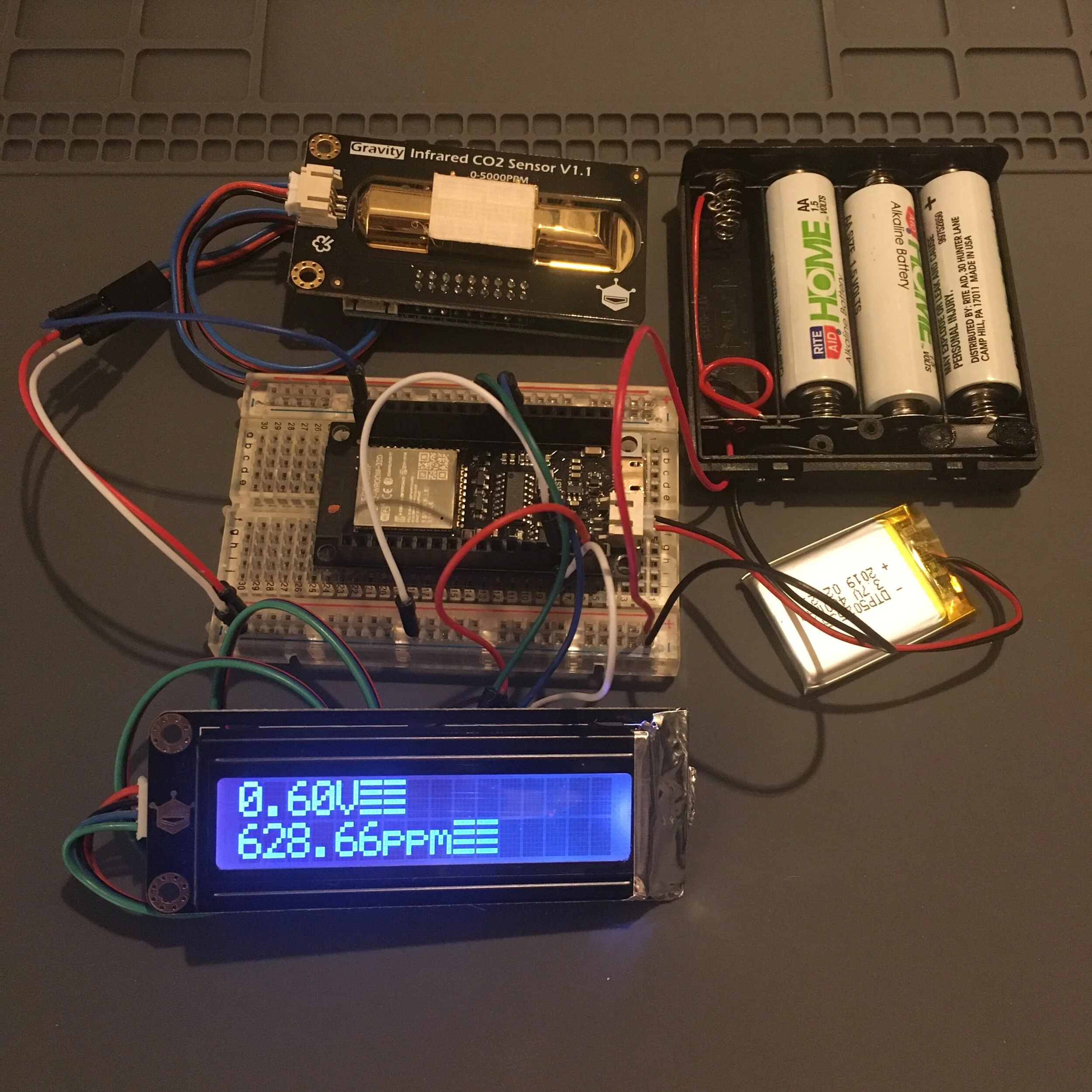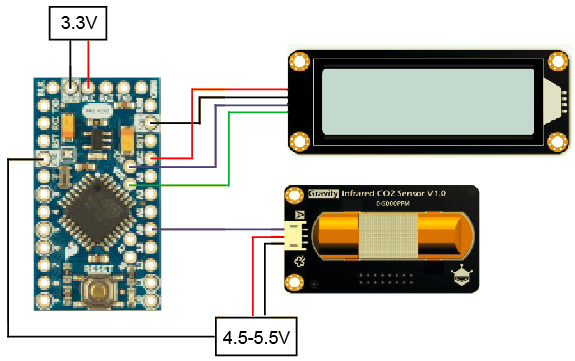Microcontroller Carbon Dioxide Meters
The aim of this experiment was to build and test a self-contained carbon dioxide (CO2) meter that could be used to measure leakage rates for Oddy test jars and other small enclosures. The system was based on available consumer electronics, using a microcontroller, CO2 sensor, LCD screen, and batteries. In contrast to commercially-available CO2 meters, which are relatively large and expensive, the DIY CO2 meter was designed to be small and more affordable.
The experiment included identifying electronic components, assembling them into two working CO2 meters with different microcontrollers programmed to calculate CO2 concentration in parts per million (ppm), evaluating the DIY CO2 meters in comparison to a commercial CO2 meter as a control, comparing the performance of the two DIY CO2 meters, and assessing the feasibility of building and using such a system in museum settings.
The findings indicated that the DIY CO2 meters have greater accuracy below 1000 ppm, but their ability to detect air leakage and provide a basis for calculating air exchange rate would be beneficial for small enclosures and scenarios with multiple simultaneous tests. The two microcontrollers differed in their rates of power consumption and stability of CO2 readings. Further testing was recommended to clarify the role of power supply stability in CO2 readings, which may have contributed to inconsistent results.
Arduino Pro Mini microcontroller system
FireBeetle microcontroller system
HOBO vs. FireBeetle
Testing setup in chamber
HOBO vs. Arduino Pro Mini
Soldering inspection
Arduino Pro Mini wiring diagram
FireBeetle wiring diagram







